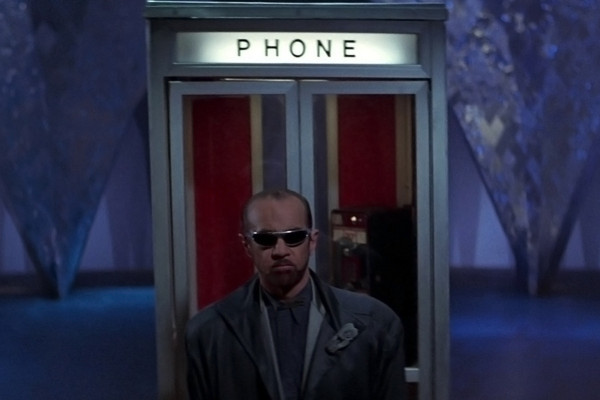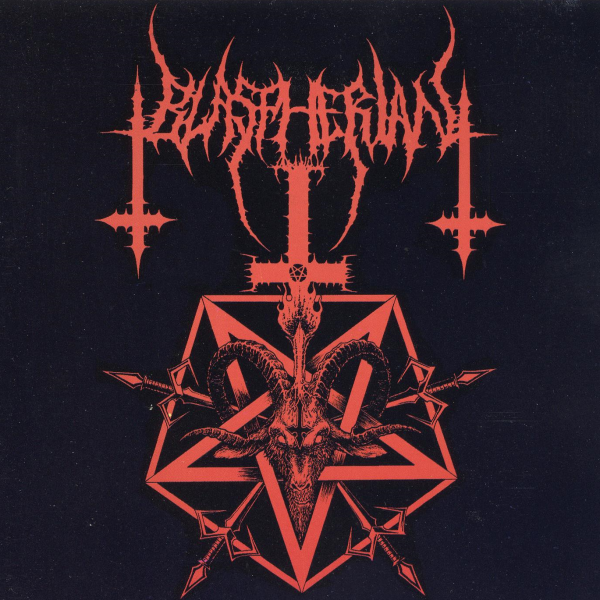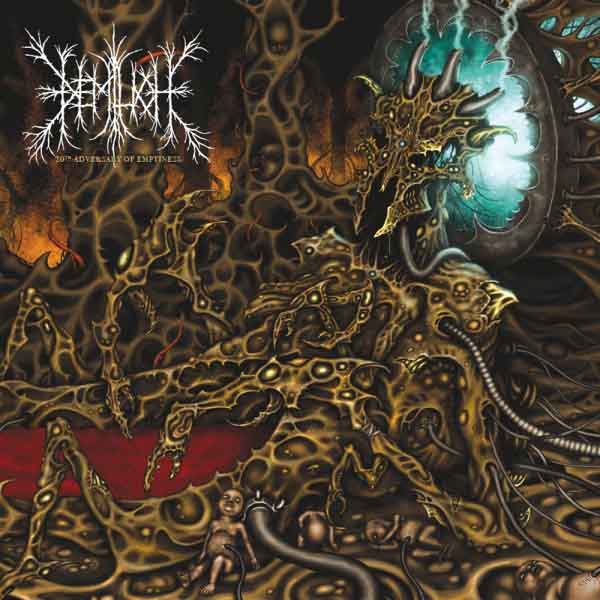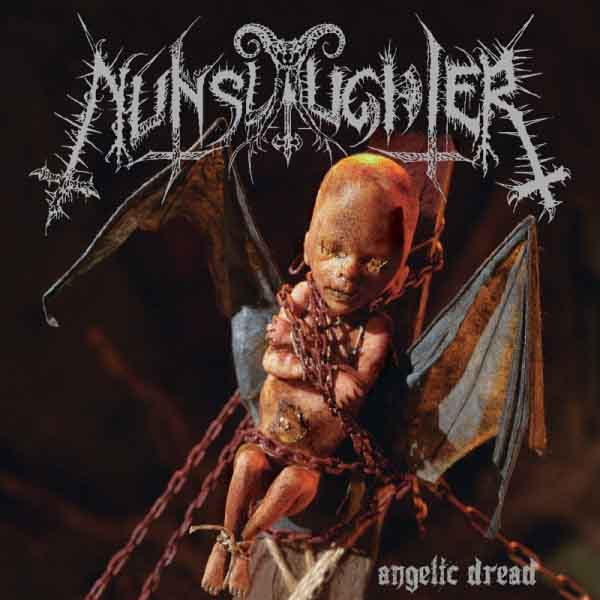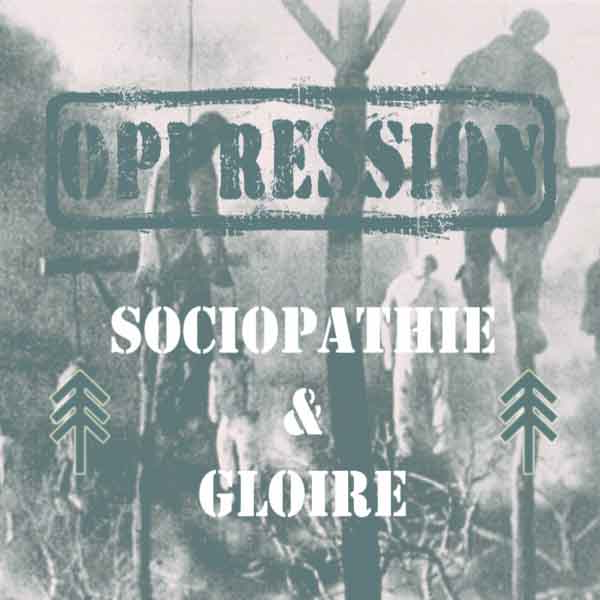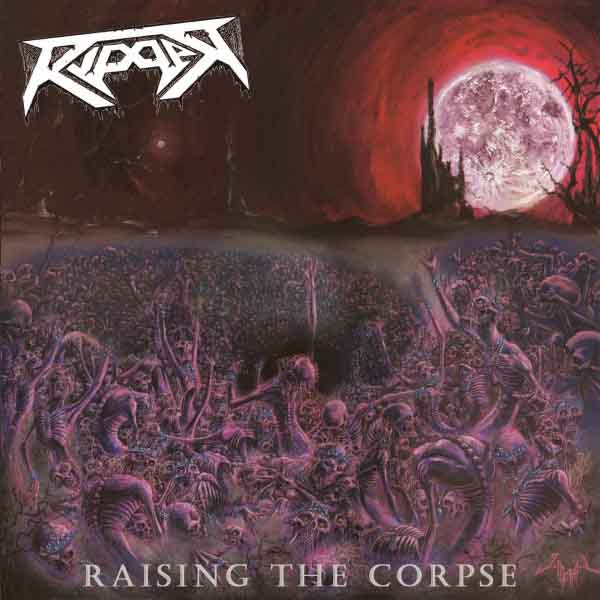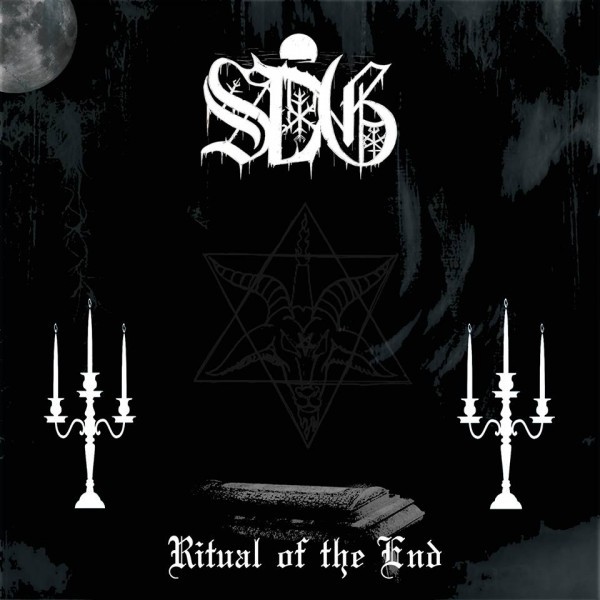William Burroughs often wrote about the “edge,” or the liminal threshold between states. The last real edge year for underground metal was 2009 when strong contenders and new voices united to defend extreme metal against the onslaught of imitators making Potemkin village metal from hipster flair and lite-jazz fireworks but underneath it, nothing but disorganized songwriting and an absence of something to express. As the underground has come back with a vengeance, it has begun to displace the imitators because their music simply does not measure up. This has created a backlash as the hipsters defend their territory with guilt, ostentation, pretense and surface-level novelty. On the other hand, the underground has produced some strong contenders. And so we move forward through the past to the future, remembering that what is true is eternal, and trends, novelties, fads, hipsters and other transient moments pass quickly away…
Blaspherian – Demos (Compilation of Death)
Compilation of Death Records has re-issued the a classic demo and rehearsal from a band of recent vintage but oldschool origins, Blaspherian. Their thunderous death metal sounds like Incantation and Obituary covering Deicide but has a voice of its own and unique perspective. It also carries forward the old school sensibility of building intensity and contrast in a morbid mood that is not self-echoing and redundant. Songwriter Wes Weaver (Imprecation, Infernal Dominion) avoids solos and other adornments to focus on tunneling riffs that are distinctive and create interplay with others in each song to give every song a unique feel within the lexicon of symbol and emotion that death metal addresses. Like the bands that inspire it, Blaspherian aims to create an immersive atmosphere of doom and morbidity in which it can bring forth other emotions in layers, such that the “mixed emotions” feel common to much music is not something achieved at the peak of a song, but is a constant in which the emotions mixed vary like a texture, revealing new combinations under the shifting striations of darkness.
Blood Urn – …of Gory Sorcery and Death (Terrorghoul)
Death metal of the classic style fascinates this young band who write music much like the early years of death metal but with more of an emphasis on melodic bridging material, avoiding the pitfall of using melody as essentially a production technique and instead causing it to highlight songs that come alive with a ferment of conflicting riffs. Vocals use the old-school method of shadowing riffs and the salad of phrases itself fits together and creates a deepening mood. While on the heavier and slower side of death metal, this demo is varied enough to touch on all areas of the genre, assembling rich textures as a means to develop depth to the emotions in each part of the song. Unlike many newer bands, Blood Urn decided not to follow a single identifiable influence but instead sound like a study of European and American death metal rendered by someone approaching it with a fresh vision.
Cenotaph – Riding Our Black Oceans (Chaos, re-issue)
A re-issue of this album restores it to its rightful place in the death metal canon. After the immensely powerful Gloomy Reflections of Our Hidden Sorrows, the thunderous Mexican death metal band Cenotaph changed their style to an airier and more intense high-speed melodic death metal sound. Unlike contemporary “melodic death metal” this style embraced the vigor of death metal by expressing it through sequences of tones that added melody without obscuring structure and darker moods, and Cenotaph displayed its customary acumen for songwriting by keeping each track centered around an idea that came forth not only in the whole but in the shape of its riffs. In the years following Sentenced North From Here and At the Gates The Red in the Sky is Ours, many bands attempted this newer style but few made it as vicious and uncompromising as Cenotaph.
Conquering Dystopia – Conquering Dystopia
Conquering Dystopia creates instrumental mental that hybridizes death metal styles with progressive heavy metal and some of the newer progressive styles like that of At War With Self. The result often sounds a lot like Joe Satriani’s older works in that clear theme is expressed and highly repeated, but varied with other instrumental detours which strengthen it as the song progresses and all the pieces fit together more an in interrupted linear way than the geometries of pure death metal. While this is like most commercial rock indulgently emotional, the underlying music is good and the technique interesting without leaving service to what each song needs, which keeps it not only topical but interesting.
Dead Congregation – Promulgation of the Fall (Martyrdoom)
Although this band gets mentioned as the foremost in the “Incantclone” series of bands inspired by streaming columnar detuned tremolo underground metal in the style of Incantation, Demoncy and Havohej, Dead Congregation draws influence as well from the subtler structuring of older Immolation in its use of melody to underscore is otherwise a thunderous series of chromatic rhythm riffs needing a center. Although songs vary in completeness throughout the album, generally these storming high-intensity dirges fit together well and produce an encompassing atmosphere which both crushes and awes the listener. If anything, this band could let up on the classic technique and float more of their own aesthetic ideas now that they are established.
Demilich – 20th Adversary of Emptiness (Svart, re-issue)
Back when death metal was viewed by just about everyone as an incompetent genre of malcontent losers who would go nowhere and who were complaining about our new consumer+hippie paradise, a few bands emerged who saw the emerging genre not as a style but as an artistic voice with unlimited possibilities. One of these, Finland’s Demilich, created an album so circuitous and bizarre that the metal press basically dropped it and ran in fear, as did many fans. For those who discovered it however, Nespithe presented unlimited potential as to how death metal could adopt technicality and yet not be mastered by it and forced into the type of generic jazz-blues-rock theory that served to actually limit what musicians could conceive of and execute. With its twisted passages and seemingly erratic rhythms, Nespithe resembled a strange machine risen from the bowels of earth to conquer humankind. Instead, it inspired generations of fans and musicians to visualize death metal as a broader language than many wanted it to be. This re-issue pairs up older works with a handful of newer songs to make for a complete experience of this distinct voice and its concept.
Desecresy – Chasmic Transcendence (Xtreem)
Desecresy combine Swedish death metal, doom-death metal and atmospheric influences from black metal to create towerlike scenes of dark moods in collision. With Chasmic Transcendence, the band update the formula with more easily separable rhythms to riffs and use of melodic transitions to intensify the building sense of doom. It builds grinding tension and discharges it in lengthy melodic passages which expand beyond their origins into new landscapes. Add to this a tendency to use lead melodic rhythm guitars over its power chord riffs and this makes for a haunting listen that resembles a descent into the underworld. With this third album, the band shows not only its staying power but the depths of the well of its creativity in not just re-inventing older styles but finding a new combination of them and using that to express a perspective which elaborates upon the basics of the genre and gives them new elegance and power.
Enthroned – Sovereigns (Agonia)
Famed for their high-speed melodic black metal, Enthroned take the populist approach of middle-period Dimmu Borgir — before it went into its final stage as warmed-over hard rock — and craft it with greater urgency and the instrumental approach of older black metal. The result more resembles the later Bathory albums where heavy metal, proto-black metal and post-Slayer death metal influences merged to create a potent ferment. Sovereigns does not achieve the vast contrasts and epic sense of loss of earlier black metal, but upholds a battle-spirit and pushes it into song with strong melodies that do not lapse into the cloying saccharine world of “feelings” — personal observations based on personal perspective — but instead appeal to emotions, or the shared sense of importance and value to certain things which might be eternal. This album breaks up the formula slightly with slower songs as the album expands, in the style of Hypocrisy Penetralia.
Entrench – Violent Procreation (War Anthem)
Following in the steps of Merciless, who could be seen as the stylistic ancestor of this band, Entrench craft speed/death metal with melodic underpinnings and a frantic but strident voice which guides riffs much in the way Dio narrated his own songs. To the Merciless formula of adroit ripping riffs concluding in both ambiguity and alignment, Entrench adds a Kreator style of finality to both vocal and guitar phrase, making these songs less emotional but more solidly violent. While speed/death hybridization usually ends badly, here the essence is speed metal riffs played as if by a death metal band in the context of a rhythm more like that of death metal. The result is satisfyingly impact-oriented but for it to take the next step to where Merciless is, it will have to coordinate its melodies and cultivate ambiguity both for it to resolve and preserve to keep the dark sensation produced by the riff-style of death metal, minor key melodies and mentalities outside those of the herd.
Heresiarch – Wælwulf (EP, Dark Descent)
Attempting to forge a niche for itself in the Incantation/Blasphemy inspired style that has become a de facto underground currency during the past few years, Heresiarch create a muddier and more obscure version of their previous works, focusing less on tunneling riffs and more on simple two-chord riffs introducing songs that expand to greater degrees of structure with the slightest hints of melody. The band, in hoping to take war metal to the next dimension, probably consider their work to be unstudied and arising on impulse, but these songs show a clear pattern of development from the grinding to the structural and as a result, take the listeners with them on a journey of finding beauty in darkness and coherence in chaos. The violent slamming intensity remains but by lessening its consistency the band achieves a greater sense of contrast, like raising a sacred object higher above the marble floor to ensure that when it shatters the pieces are irreducible.
Kever – Eon of Cycling Death (Dark Descent)
Perhaps one of the most inspiring releases this year, Eon of Cycling Death wears its old school influences in Suffocation and Morbid Angel on its sleeve but without imitating them in pale imprint of their technique without understanding their essence. Instead this band forges on with a kind of fantasy death metal that shows them living an alternative and parallel timeline to these bands, developing the basics they innovated with a voice specific to these individuals regardless of what time they are born into. Percussive riffs give way to an ensemble of death metal styles united by rhythm and space which convincingly outline the ideas of each song and then give them depth through internal dialogue. On top of it, an abrupt and croaking vocal gives new life to a very familiar technique with its guttural but carefully sculpted sonic enunciation.
Massacra – Enjoy the Violence (Century Media, re-issue)
One of the great classics of death metal, long passed-over for more dramatic acts, gained new life with this re-issue. Massacra created their early music in the style which stretches from Slayer through Morbid Angel and emphasizes fast strumming of rapidly-colliding riffs which emphasize ambiguity and openness over the kind of certainty that works well with more percussive styles. Enjoy the Violence is like a rollercoaster between extremes where all things lead back to the same point, but the experience is changing enough that it is almost unrecognizable as the same. With the remaster, some of the weaker sound from the earlier recording is corrected and bonus tracks are added, giving new life to this under-recognized classic of the genre that was more highly influential among musicians than fans, and took on new life in the bands it influenced.
Massacra – Final Holocaust (Century Media, re-issue)
This foundational album of death metal by Massacra has been re-issued by Century Media with bonus tracks and a booklet rich in information. That provides a good introduction to this view of the death metal style, which instead of attempting to be “heavy” aimed for shock and awe with fast riffs and convoluted songs that somehow emerged into an almost peaceful calm after chaos and combat. Massacra derive their strength from the ability to write fast-fingered riffs that capture the thrill and terror of being alive into a single moment and use this to make basic clashes within life into a mythology of trying to conquer empty spaces with the will and sensibility of a warrior wandering a dystopian wasteland. While this album was forgotten in the day mostly due to its mids-heavy (in contrast to bass-heavy) production and relative availability through distribution contracts more circuitous than its riffs, it rides again in new form.
Massacra – Day of the Massacra (Century Media)
Century Media compiled several early Massacra demos into a single disc, paired it with extensive liner notes and pictures, and remastered everything for an insight into the rise of the Massacra sound while it was recognizable as what would emerge on the first two and most influential Massacra albums. These recordings show the band merging its early influences into a style and then finding its own voice within that beast, allowing it to compose distinctive and evocative songs immediately including several pre-album tracks with some duct tape still visible. While this might appeal most to Massacra maniacs, it also serves as a useful introduction to new fans who may appreciate the heavier production and more aggressive primitive approach here as a means of transitioning to the albums that follow, which focused not so much on slamming impact as a kind of sky architecture of riffery.
Nausea – Condemned to the System (Willowtip)
Straddling the line between grindcore, crust and old-fashioned hardcore — which are inches apart as it is — Nausea return with this recording of older and newer tracks alike. Carefully pared down to incorporate only necessary elements and keep energy high, Condemned to the System demonstrates the simpler style of punk composition with all of the riff power of early grindcore, including several tracks (and pieces thereof) that later made it to the first Terrorizer album, World Downfall. The listener who can forget that heritage however will discover merely a crushing, efficient and streamlined album of enjoyable but hard-hitting punkish music that will not win awards for extremity or technicality, but shows care applied to songwriting so that a listener does not feel lost in a sea of riffs or drone, but can isolate each song in the mind and appreciate its individual attack.
Nunslaughter – Angelic Dread (Hells Headbangers)
While some may be tempted to categorize Nunslaughter as dinosaurs, the fact remains that this band takes the raw ingredients of power metal, speed metal and most death metal and makes a stripped-down, hardcore-punk style ripping version of this that remains highly listenable even if not particularly distinguishable on a song-to-song basis. Like other collections of many short songs, such as Dead Infection or Carcass, Angelic Dread operates like many small insights into roughly the same idea. Somehow, what this band creates never gets old, in part because they understand their riffs as a language from the same basic source, and in part because like a thrash band their song format carefully fits the particular clash of the two riffs (with a few budget transitions, and sometimes rhythmic variations, Nunslaughter uses two riffs per song on average) and the need of presenting them in the best light. The result is compelling and enjoyable and upholds the best tradition of riffcraft and expressive violence in underground music.
Oppression – Sociopathie & Gloire (Preposterous Creations)
Merging Oi!-style punk with some enhancements from black metal, tracks are short (2-3 minute) affairs. Melodies are catchy, yet wistful lines grounded in simple guitar and bass riffs, with vocal alternating between manic shrieks and an idiosyncratic, youthful attempt at melodic singing. Using the more linear style composition of punk, as opposed to the riff-stacking song construction used by much of black metal, each song contributes a sense of motion that builds the album up over successive tracks. Production values are what one would expect for this style of music; clear enough to make out each instrument, but raw enough to preserve low-budget ethos. This is a release that is not attempting to invent a new genre, but rather one which seeks to renew genres that had collapsed under their own entropy. The strange aesthetics may be off-putting to some, but if those can be sublimated into the spirit of this album, a refreshingly honest work will open itself for enjoyment.
Personal Device – Microorganismos del Mal
First there was the faux 80s crossover thrash revival with party retro-thrash bands like Toxic Holocaust and Municipal Waste, then bands like Birth A.D. bounced back with actual thrash and reformed the genre. Now Personal Device take it a step both further and in a different direction by being a classic hardcore band that informs itself with early speed metal like the first Metallica and Nuclear Assault albums. The result is bouncy fast and precise punk like Ratos de Porao or even middle-period Bad Brains that is thoroughly enjoyable with riff breaks that resemble “The Four Horsemen” or maybe even “Live, Suffer, Die.” Their guitars are remarkably precise which creates an unusual sound for punk that by making it mechanistic makes it seem more inexorable than like protest music, and the result is a more testosterone-fueled and warlike approach. Mix that with the surging chord changes of speed metal and the fast repetitive chanted choruses from thrash, and you have a high-energy band. Its flaws are that experienced listeners may find this a bit too transparent, and that many of its rhythms are similar, but the band has administered its style with an editor’s red pen handy, cutting out any lesser parts, which gives it more staying power than all but a few albums in this stylistic range.
Ripper – Raising the Corpse (Underground Defenders)
Much like Merciless, Ripper know to invoke a melodic hook with a rhythmic hook and gradually bring a song into unity, at which point they hammer home the infectious chorus until the audience is ready to carve it into their own flesh. While some may point out that little new occurs here stylistically, and many of these riff forms can be traced back to Slayer or Destruction, what Ripper does well is keep this music high-intensity without falling into sameness and to streamline into an effective delivery mechanism that outgrows the confused collision of styles that was the mid to late 1980s. This approach fits within the early speed metal model that formed the basis of great hook-laden German bands like Destruction and Sodom, and this tradition continues with Ripper. Where Ripper succeeds is in removing extraneous material and cutting to the core of its music, eliminating some of the distraction and randomness that blighted later work from the German bands.
Sorcier Des Glaces – Ritual Of The End (Obscure Abhorrence)
Flowing dark melodic forest black metal band Sorcier des Glaces burst onto the scene as any appreciation for this style of Graveland and Immortal influenced black metal fully waned as the initial loss of momentum in the genre caught up with its inertia. Since that time, the band has continued its path of making naturalistic long-melody black metal with the distinctive wandering tempo and phrasal development that many of the French bands also explored. With Ritual of the End, Sorcier des Glaces present their vision in a more focused style that nonetheless preserves the inconclusive nature of their earlier music, becoming like a vision of the woods at twilight equal parts promise and ambiguity, revealing the continuous nature of life through its inability to achieve finite endpoints. When metal mistakenly went toward faster/more extreme variants of the past, it lost the majestic beauty which inspired imagination as well as aggression, and Sorcier des Glaces return it.
Varathron – Untrodden Corridors Of Hades (Agonia)
One of the original Greek black metal bands, Varathron returns with higher speed and more dominant melody in a style that approximates what Borknagar and other later black metal bands tried to do, with some nods to music since but fundamentally a sensibility closer to Rotting Christ Thy Mighty Contract. Keeping energy high with frequent changes but return to theme and focus on a melody or progression at the heart of each song, Varathron expand their repertoie and craft an album that speaks enough of a contemporary language to dominate that style with the vocabulary of the older era, invoking both a return to and a continuation of the past. While the influence of the present time makes itself known, it remains under control of the guiding forces behind this band that seek to open the imagination instead of gratify self-image, and as a result more possibility emerges here than in other contemporary works.
Witchblood – Hail to Lyderhorn (Aurora Australis)
Attempting to uphold the values of classic black metal while introducing to them some of the more recent developments in tradfolk-inspired music, Witchblood combines the catchy attack of Venom with riff technique from mid-90s black metal and adds its own voice, which consists of equal part narrative bardic style and an idiosyncratic ability to make memory-haunting tunes. The result features a range of techniques from the history of metal, including NWOBHM-inspired riffing right alongside streaming tremolo picked melodic riffs, but this band makes it work by keeping focus on an essential melody in each song paired to a vocal rhythm designed to deliver a foot-tapping chorus, as bands like Sodom or Destruction did years ago. The result takes the Venom school of metal, upgrades it with black metal, and restores it to a 1980s delivery that is both clear and dark and then infuses that with the type of ancestral identity and epic sensation of purpose that arises from folk music. Through this, Witchblood creates its own form of metal that shows clear roots in much older traditions.
Woodtemple – Forgotten Pride (Sacrilege)
Showing more of an influence from Following the Voice of Blood era Graveland, Woodtemple return with a more focused version of their flowing black metal. In the past, the music more resembled flowing hills in a landscape of vast breadth, but now greater internal contrast makes what is portrayed closer to a mountain range with ragged crags over deep valleys. The addition of floating female vocals and gentle keyboards allow the band to put more aggression into guitars and bass, keeping vocals semi-backgrounded which produces the effect of reducing the “human” feel to the music. As a result, songs come together with more focus, making this the clearest statement from Woodtemple yet made. Like most metal in this style, Forgotten Pride creates an effect of distance from the human world, isolation and a focus on the larger picture through a lens of large leaps in time, but now creates another hypnotic effect in a distancing from humanity itself. This band, while not a Graveland side project, features Graveland composer Rob Darken on bass.
Album of the Year 2014
Sammath – Godless Arrogance (Hammerheart)
Godless Arrogance features nearly constant high-intensity rhythmic riffing and finally has a production to match which emphasizes internal harmony but projects vocals and guitars to the forefront, creating an enveloping wall of sound. Drumming is violent martial battery without the happy kickbeat tendencies of overly rock-trained drummer; percussion here is more like punk, hard-driving intensity to channel the guitars, which alternate between abrupt chromatic confrontation in the Demoncy style to gentle unfolding melodies much like were found on Strijd. Bass folds into the guitar, and vocals are the high-volume bluster that reduces distorted vocals to a sound like a whisper spoken close to a microphone in high wind. The result is incessant and unrelenting but also has an inner life of melody that gives it depth and allows it to manipulate riff context like a death metal band while evoking ambient atmosphere in the best tradition of black metal. For resurrecting the black metal spirit of great beauty hidden within massive aggression and alienation, Godless Arrogance deserves to be seen as the best album of 2014.
Related:
